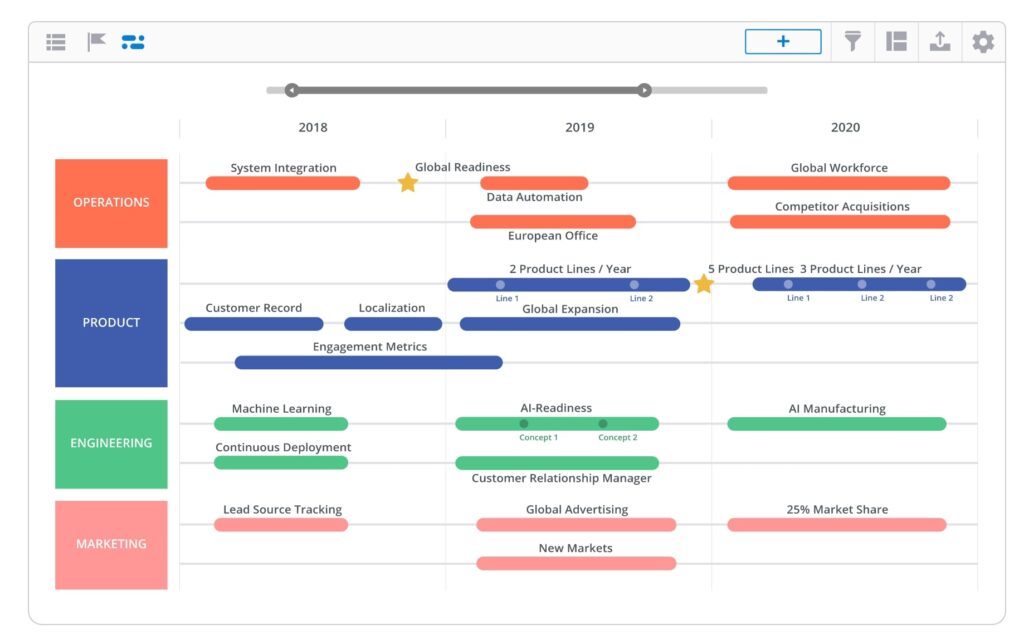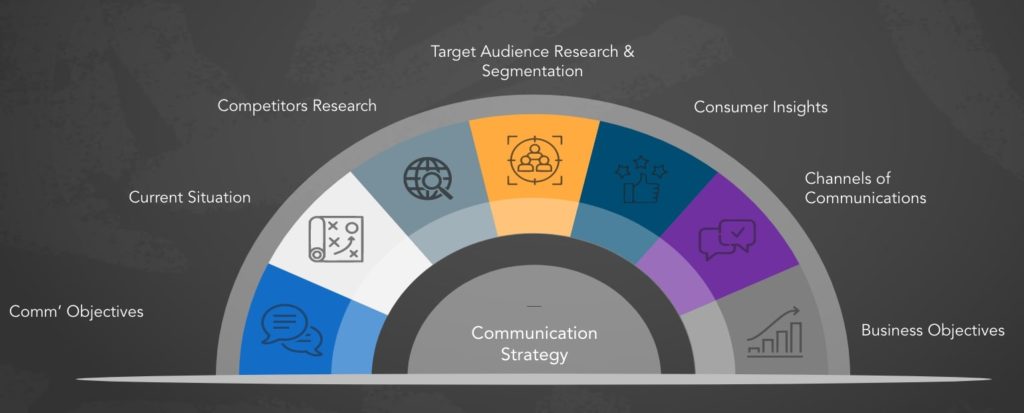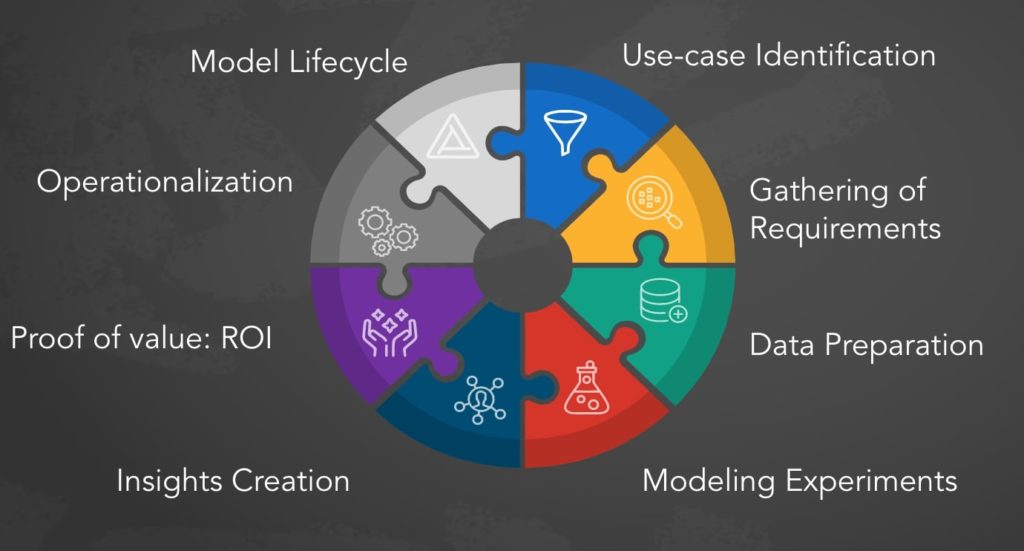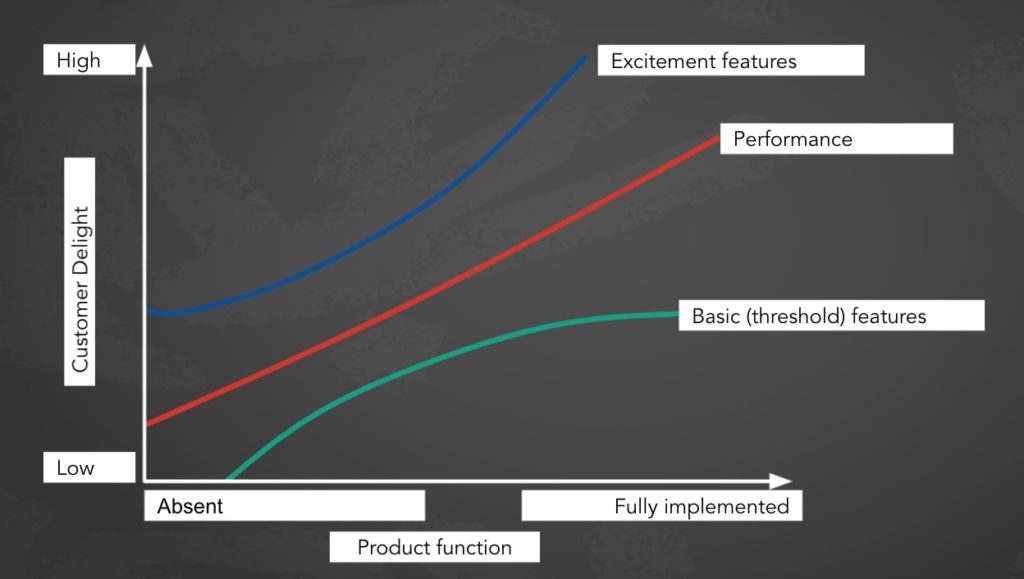Now more than ever, being a principal product manager is a job title that most product professionals aspire to attain.
Product management has established itself as one of the leading fields for career development today. According to Glassdoor, the average salary for a product manager is $155,611 as of 2024.
Principal product managers are among the most senior roles in the product development process. Therefore, the expected salary increase inspires many junior product managers to climb up the corporate ladder and land this position.
Steps to Become a Principal Product Manager
Here is a process on how to become a principal product manager:
Step 1. Obtain Certification in Technical Product Management
While the path to principal product manager doesn’t have to include technical product management, getting certified in technical product management is a wise step.
The demand for technical and product management positions is high.
Deloitte has shared that more and more businesses are embracing technology in their business processes and solutions. Gartner has also foreseen this transformative digitization, forecasting continued growth and achievement for business objectives in the coming years for both software and devices.
Having technical skills and abilities is an asset to anyone seeking a principal product manager position.
For those who have a background in the computer sciences, you already have one of the most important skills. Additional areas include:
- Background or knowledge in Agile methodology
- Business skills
- Data analysis
- Market research skills
- Problem-solving
- Product roadmap development
- Solid communication skills
- Strategic thinking
To get you started, check out PHQ’s Technical Product Manager Courses. These will help you round out your knowledge of the technical side of product management.
Step 2. Learn the Fundamentals of Product Management
While technical product management is a specialized niche, being a product manager involves much more.
Becoming a principal product manager may require you to have technical knowledge, but having the skill set of a product manager is a must. Granted, there is some crossover in skill sets.
The product manager role meets at the intersection of three disciplines:
- Business
- Technology
- User experience (UX)
With those skills, you contribute to everything from product vision to product development. You will then have the ability to define the needs of the customer and at the same time communicate with cross-functional teams and key stakeholders. You will also leverage your strategic thinking skills to create a product vision and its corresponding roadmap.

A survey done for the Product Management Insights Report states that 84% of the product managers polled say their key activity is setting product strategy.
Because product management entails all of these activities, the principal product manager skills we’ve mentioned are fundamental in helping you land a role as a principal product manager.
Step 3. Study Industries Associated With Product Management
While product management is a field that impacts all industries, some stand out more than others.
Paying attention to those key industries will go a long way in helping you to become a principal product manager.
If that’s you, here are three industries you should consider:
Internet of Things
Today, the Internet of Things industry is booming. Now, some refrigerators order your groceries and inform you when items have reached their expiry date. Some cooktops allow you to connect using Bluetooth or Wi-Fi.
These are just a few examples of recent smart homes or IoT devices. But the sky is the limit, with more and more household items becoming connected.
Considering that this industry will continue to experience a significant boom, anyone hoping to pursue a career as a principal product manager should keep an eye on trends and tendencies in the IoT sector.
Healthcare
While healthcare has had its challenges in the last two years, it’s still an industry that continues to innovate. They’re currently spending billions of dollars on nanotechnology research.
Wearable healthcare devices are also on the rise. And thanks to the pandemic, the industry has identified other problems that need to be solved. Companies hire product managers like you to find an adequate solution for them.
FinTech
Payment solutions continue to evolve as consumer readiness pushes businesses to adopt new financial service options. The banking industry is looking at an unprecedented time of innovation.
Some of the current top trends in FinTech are:
- Digital-only banking
- Payment innovations
- Use of artificial intelligence
New products and innovations require most senior product managers, who can then transition into a position as a principal product manager.
Step 4. Gain Relevant Experience
There are multiple ways to gain relative work experience, and they all don’t need to happen on the job. This can be challenging for new graduates.
The following includes both formal and informal ways of gaining work experience.
- Internships
- Job shadowing
- Volunteering
- Freelancing
Do Internships
Internships will provide you with a professional learning experience. It’s a great opportunity for exploration and job development while offering practical work in your area of interest.
Student interns should expect to gain real work experience from mentors who will provide guidance and feedback. It also allows them to develop professional contacts that may be useful in the future.
Job Shadowing
It means you follow a professional in your field of interest as they work. This can give you a better hands-on understanding of a particular product manager career path.
While each job shadowing experience will be different, you can expect to observe and perhaps even take part in some of the employees’ daily tasks. This is a great opportunity to learn critical skills while on the job.
Volunteer
Volunteer work is often available through many nonprofit organizations or even in your community. Many of the soft skills a principal product manager needs can be attained through this type of work. For example,
- Leadership skills
- Communication
- Teamwork
- Problem-solving
While many of these skills can be learned in day-to-day life, obtaining them in a volunteer position would count towards work experience.
However, you’re still looking for work experience that will land you a job as a PPM. Consider doing freelance work around some of the core skills necessary for a product manager job.
Become a Principal Product Manager With no Experience
Getting hired as a principal product manager without any experience may seem impossible.
That said, if you don’t have any direct product management experience, chances are you will be hired as a product manager. From there, you can then transition to a position as a principal product manager. Getting hired still won’t be easy, but it isn’t impossible.
By now, you understand that the role of PM requires many different skills. You may not be an experienced product manager, but being able to prove that you have the right skill set may be sufficient.
For example, you may have managed a project instead of a product.
If you’re preparing a resume or portfolio and you don’t have experience, be sure to highlight the relevant skills and background knowledge you do have.
Prepare for a job as a Principal Product Manager
You’ve got the skills, now you need to do the job.
Depending on industries and specific organizations, the duties of a PPM will vary. However, here are their key responsibilities and basic day-to-day responsibilities.
1. Develop and Communicate Product Strategies
It’s the PPM who strategizes the entire career and roadmap from the original product vision to launch. This will include determining whether a product is even viable for development and production.

The McKinsey Strategic 3 Horizon Model is an example of a framework that some product managers use to develop a product strategy.
Regardless of the framework you choose, your process will involve the following:
- Setting goals. These are goals, or goalposts, that the team needs to accomplish along the way.
- Defining product vision. The product vision or product vision statement is a guide and reminder of the end goal the development and product teams are working towards.
2. Collaborate and Communicate With Stakeholders
It’s the principal product manager’s responsibility to ensure stakeholders are aligned with the company vision and product strategy.
This requires them to work with product leaders, product development managers, and product marketing managers to identify market opportunities. Together, this group devises a plan of action that aligns with the product roadmap.
This calls for close collaboration and strong communication skills.

Many product managers use the communication framework featured above to determine a communication strategy to target their customers. You can take advantage of the framework to develop your strategy to communicate not only with your product users but also within your team.
3. Analyze Data
The PPM must ensure the product lifecycle aligns with company goals.

Four analytic skills they’ll often use are:
- Creating customer metrics to help make decisions about the product they’re developing.
- Ask investigative questions so they can gain better insight into their product.
- Making data-informed decisions. These are decisions that are based on more than hard data. Final decisions will be based on data, plus personal experience, intuition, and context.
- Explaining or communicating their analysis to team members, management, and stakeholders.
4. Prioritization and ROI
Along with the product team, it’s up to the PPM to make decisions regarding funding based on the product’s quality rating.
The PPM also needs to stay aware of product opportunities that could lead to increased revenue. Or it may be necessary to prioritize or abandon product features based on their potential ROI.

The principal product manager doesn’t exist in a vacuum—nor does their product. They understand the need to keep a finger on the pulse of current industry and market trends. This puts them in a position to keep stakeholders informed if necessary.
To a large extent, the success of an organization will be based on product success and the quality of its products. PPMS must understand its role in producing successful products.
5. Develop Marketing Strategies
Part of the job description of a principal product manager will be to develop marketing strategies. This will involve understanding who your target audience is and how you plan to market to them.
Key Takeaways
Those who’ve already become principal product managers agree that the hard work done to land the job is worth it.
The job calls for someone with exceptional leadership skills, above-average communication skills, and some degree of experience working on other business development projects.
Be sure to gain experience as a product manager before transitioning into this type of role.
Compliment your experience by taking a course in product management to ensure that you have the skills and knowledge to succeed in this position.
FAQs
Here are questions that principal product managers frequently ask:
What is the career path of a principal product manager?
The principal product manager’s career path starts with a product manager or an associate product manager. Progression includes advancing to senior product manager, then vice president, and then principal product manager, focusing on high-impact projects and strategy.
How do you become a top 1% product manager?
To become a top 1% product manager, master the fundamentals of product management, including market analysis and research, user research and experience, and agile methodologies. Senior product managers continuously develop their technical and business skills while using customer feedback and staying updated on industry trends. You must build strong relationships with cross-functional teams, and consistently deliver high-impact, customer-focused products.
Is the principal product manager the same as the director?
No, a principal product manager focuses on leading high-impact projects and product strategy, often without direct reports. A director of product management has broader responsibilities, overseeing multiple product managers and aligning product strategy with business goals. The product management director role typically involves more managerial and leadership duties.
What is the principal product manager’s salary?
The salary of a principal product manager varies based on location, industry, and company. In the United States, the average salary ranges from $150,000 to $200,000 per year, with top companies or tech hubs potentially offering higher compensation packages including bonuses and stock options. While the salary for a chief executive officer and chief product officer can be even higher.
If you are new to product management and are looking to break into your first product role, we recommend taking our Product Management Certification Courses, where you will learn the fundamentals of product management, launch your product, and get on the fast track toward landing your first product job.
